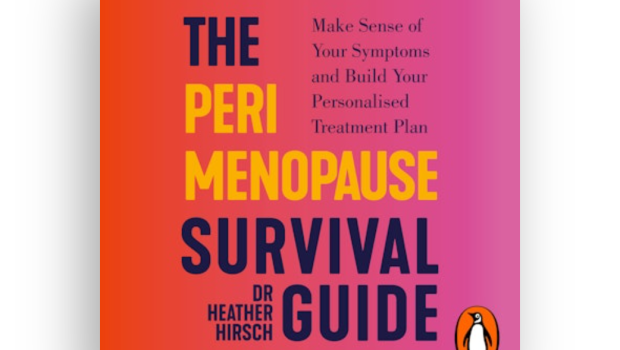The Perimenopause Survival Guide by Dr. Heather Hirsch Review
Dr. Heather Hirsch’s The Perimenopause Survival Guide is a practical and timely handbook designed to clarify perimenopause, an often-confusing phase of a woman’s life that is often dismissed. With a foundation of evidence-based medicine and genuine compassion, Hirsch provides readers with necessary medical insight and clear, actionable strategies for managing this transition effectively.

From the get-go, the foreword establishes a crucial context for the book, noting how little training most physicians receive on menopause and thus, how many women have been underserved in this area of healthcare. By educating readers on their biology and equipping them with the right vocabulary for their healthcare providers, Hirsch successfully addresses a significant gap. She validates the wide range of symptoms and offers a framework for recognizing patterns rather than simply dismissing them.
A key strength of the book is its ability to balance clinical expertise with accessibility. Hirsch explains complex hormonal processes using approachable language that non-medical readers can easily grasp. She challenges inaccurate, pervasive mythssuch as the idea that difficult symptoms are merely “part of aging” and replaces them with factual, research-driven explanations that encourage women to take their symptoms seriously. Her warmth and approachable style ensure that readers feel supported rather than overwhelmed, making the book as compassionate as it is informative.
The guide is logically structured in three connected parts. The first helps readers understand what perimenopause is and how to assess their personal priorities. The central section delves into specific symptom sets, covering everything from sleep disturbances and weight changes to mood shifts and less obvious issues like joint pain, itchiness and even cognitive changes. Hirsch also addresses “silent” symptoms and highlights risks such as sleep apnea, ensuring that readers gain a full picture of how perimenopause can affect the body. The final section outlines targeted treatments, necessary lifestyle adjustments and practical steps for moving toward menopause confidently. Further, this clear organization makes the resource easy to navigate, whether you read it completely or consult it for specific concerns.
Additionally, Hirsch reinforces the medical information using real-life case studies. Stories, such as that of Helen, the English professor who felt suddenly “unrecognizable to herself,” affirm readers’ experiences and reassure them they are not alone. These narratives make the book feel personal and relevant while maintaining a foundation of medical authority.
The book’s usefulness is further enhanced by its practical tools such as the inclusion of a fill-in-the-blank script for discussing symptoms with a doctor is a tangible way women can advocate for themselves in clinical settings. Beyond this, Hirsch provides FAQs, resource lists and other appendices that function as a toolkit for navigating healthcare conversations and daily life. Her comprehensive approach emphasizes both medical treatments, such as appropriate hormone therapy, and vital lifestyle strategies, including improved sleep hygiene, dietary changes and stress management. This dual focus acknowledges that perimenopause affects a woman’s entire life, not just her medical status.
Hirsch’s authority as a certified menopause specialist, founder of the Menopause and Midlife Clinic at Brigham and Women’s Hospital and CEO of a telemedicine practice adds weight to her guidance. Her professional background reassures readers that the advice is grounded in both clinical expertise and years of patient care. However, what makes this book so effective is its blend of medical authority and patient empowerment. Hirsch respects that every woman’s path is unique and that treatment plans must be customized. This individualized approach, combined with her clinical expertise and compassionate tone, results in a guide that is both trustworthy and supportive.
Final Thoughts?
The Perimenopause Survival Guide is a reliable, compassionate roadmap through a challenging phase of life. By combining science, empathy and functional tools, Dr. Heather Hirsch has created a resource that validates women’s experiences while empowering them to take control of their health. For anyone beginning or currently navigating perimenopause, this book is an indispensable resource that not only informs but reassures readers that this transition, though difficult, is entirely manageable with the right knowledge and support.
Recommended!






